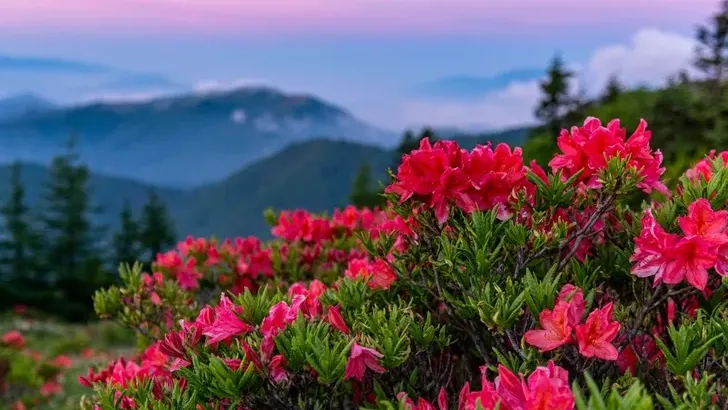Think your backyard is a safe haven? Think again. Right outside your door, beneath the innocent facade of common garden plants and familiar shrubs, lurk botanical killers that could harm your family or beloved pets. These green assassins don’t come with warning labels, and they certainly don’t look threatening. In fact, many of them are beautiful enough to grace the pages of gardening magazines.
Many poisonous plants are so common and seemingly innocuous you do not suspect their toxic qualities. What’s truly shocking is how many of these dangerous specimens are probably growing in your yard right now, masquerading as harmless landscaping. From the perfectly manicured yew hedge that could stop a heart to the cheerful daffodils hiding deadly secrets, your garden might be more dangerous than you ever imagined.
#15 Death Cap Mushrooms: The Silent Killers Under Your Oak Trees
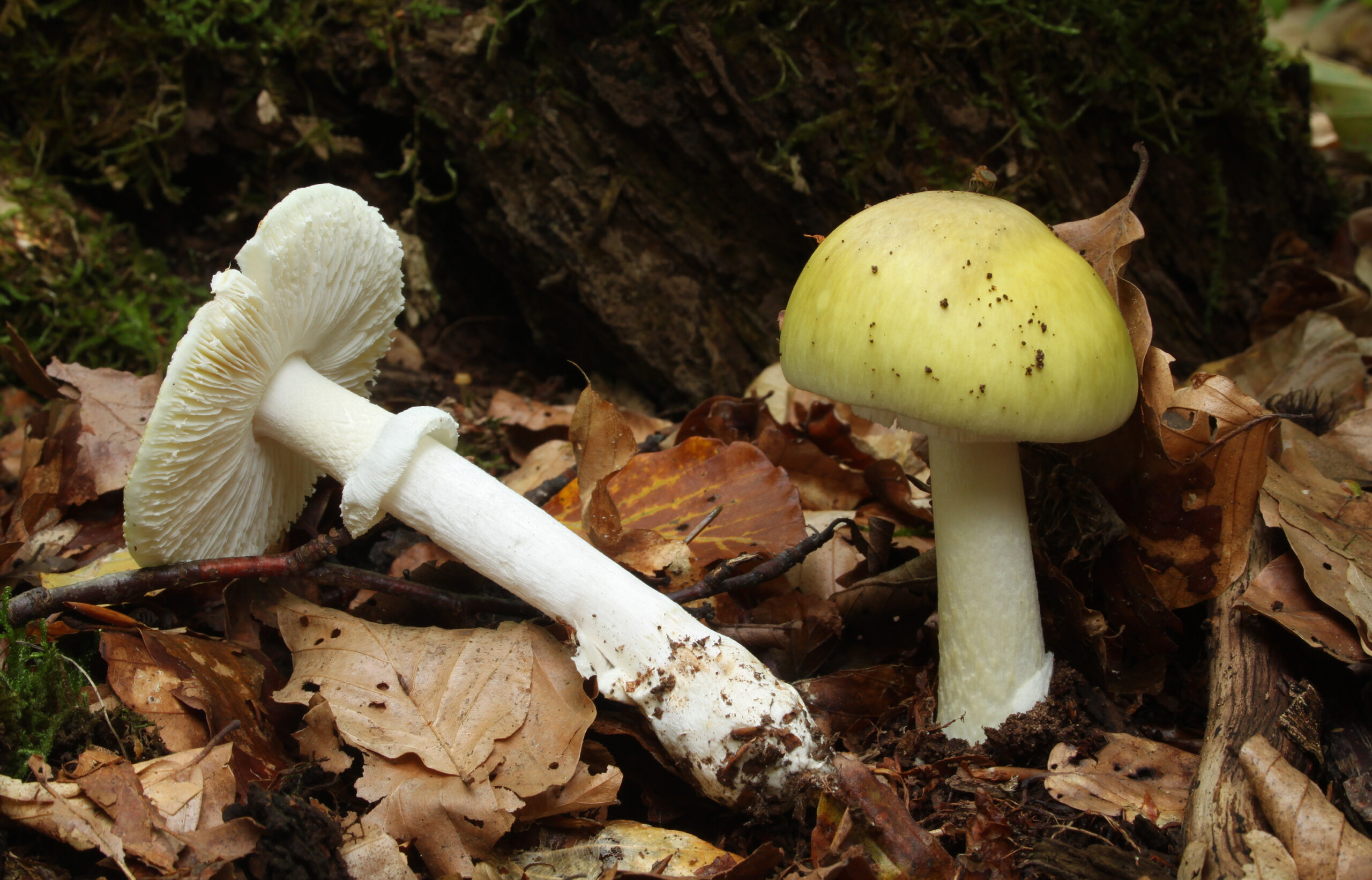
Why this plant is dangerous
- Contains high concentrations of amatoxins, which remain deadly even in tiny amounts
- Toxins are heat-stable, meaning cooking, boiling, or pickling does not neutralize them
- Responsible for about 90% of all mushroom-related deaths worldwide
- Even half of a mushroom can contain enough poison to kill an adult
Symptoms of poisoning
Without rapid medical intervention, liver and kidney failure may follow in the next 24–48 hours
Early signs (6 to 24 hours after eating):
• Severe nausea
• Abdominal cramps
• Vomiting and watery diarrhea
These symptoms often delay proper treatment because people don’t immediately associate them with the mushroom meal
#14 Yew Trees: The Churchyard Executioners

Widely used in American gardens as dense hedges and ornamental topiaries, the yew tree is beautiful — but extremely deadly.
Why this plant is dangerous
- The needles and seeds contain a highly potent toxin (taxine alkaloids)
- Even a handful of needles or just a few seeds can be deadly to humans
- The bright red berry flesh is the only non-toxic part — but becomes dangerous if the seed inside is chewed or crushed
- The toxins are rapidly absorbed by the body and directly affect the heart
Symptoms of poisoning
Smaller doses may delay fatal effects for 24–48 hours, making the danger harder to recognize
In many cases, there are no early warning signs
Sudden onset of:
• Severe drop in heart rate
• Low blood pressure
• Cardiac failure
Death can occur within a few hours if a large amount is consumed
#13 Oleander: The Beautiful Highway Killer
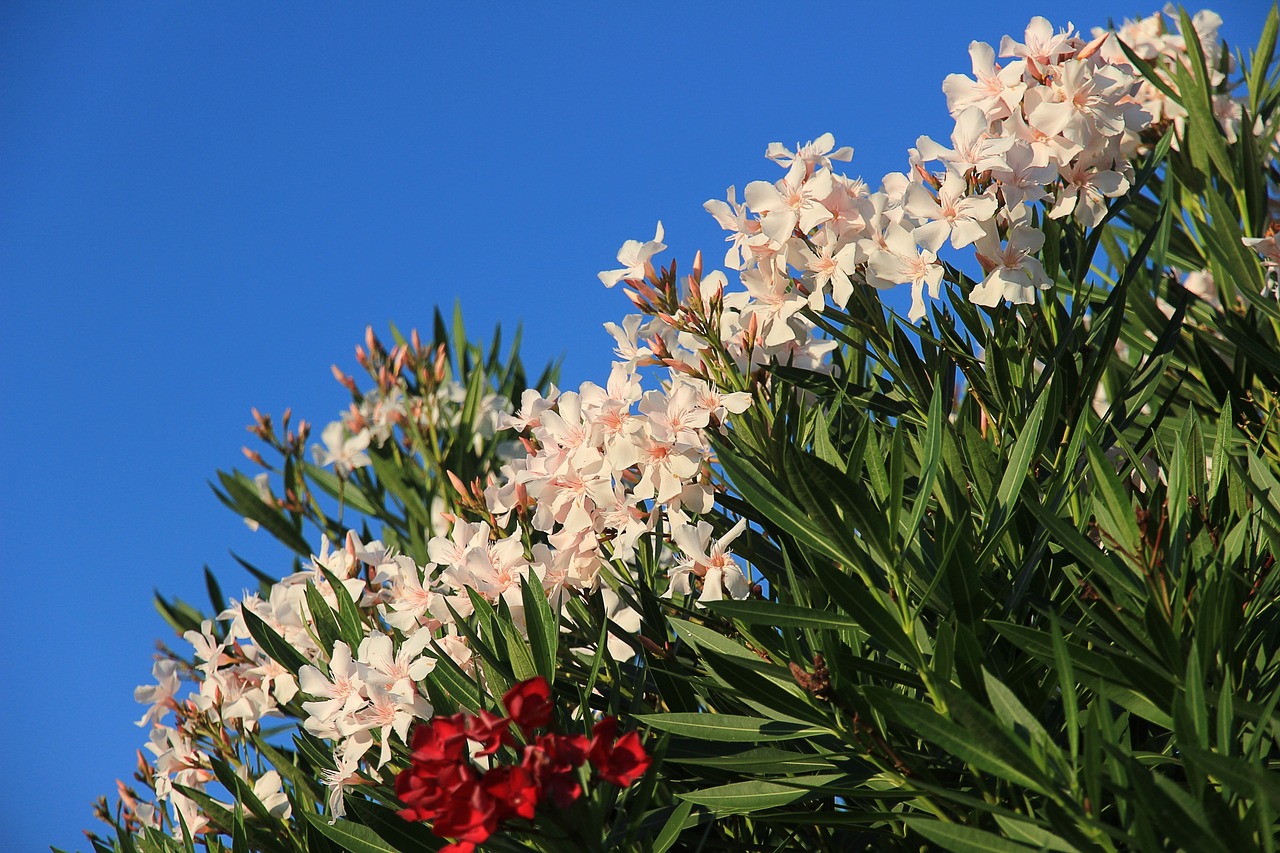
Oleander (Nerium oleander)
Oleander is a popular ornamental shrub in many U.S. gardens thanks to its vibrant flowers, but it is one of the most toxic garden plants in the world.
Why this plant is dangerous
- All parts of the plant – leaves, flowers, stems, sap – contain cardiac glycosides
- Even a single leaf can be fatal to a child or small pet
- The toxins remain potent even when the plant is dead or dried
- Ingestion (and in some cases, inhalation of smoke from burning oleander) disrupts heart rhythm
Symptoms of poisoning
Can lead to heart failure and death if medical help is not received immediately
- Nausea, vomiting, abdominal pain
- Slow or irregular heartbeat
- Dizziness, confusion, drowsiness
#12 Foxglove: The Heart-Stopping Beauty

Foxglove (Digitalis purpurea)
Foxglove is loved for its tall stalks of bell-shaped flowers, but it produces the powerful compound digitalis, which is used in heart medication — and extremely toxic when consumed accidentally.
Why this plant is dangerous
- Leaves, flowers, and seeds contain cardiac glycosides
- Digitalis toxicity affects the electrical activity of the heart
- Even small accidental ingestion (chewing a leaf or flower) can trigger poisoning
- Children may be drawn to its colorful blooms and mistakenly ingest parts of the plant
Symptoms of poisoning
Severe toxicity can cause seizures, collapse, and cardiac arrest
- Nausea, vomiting, stomach cramps
- Blurred vision or yellow-green tint in vision
- Irregular or slowed heartbeat
#11 Angel’s Trumpets: The Deadly Seducers
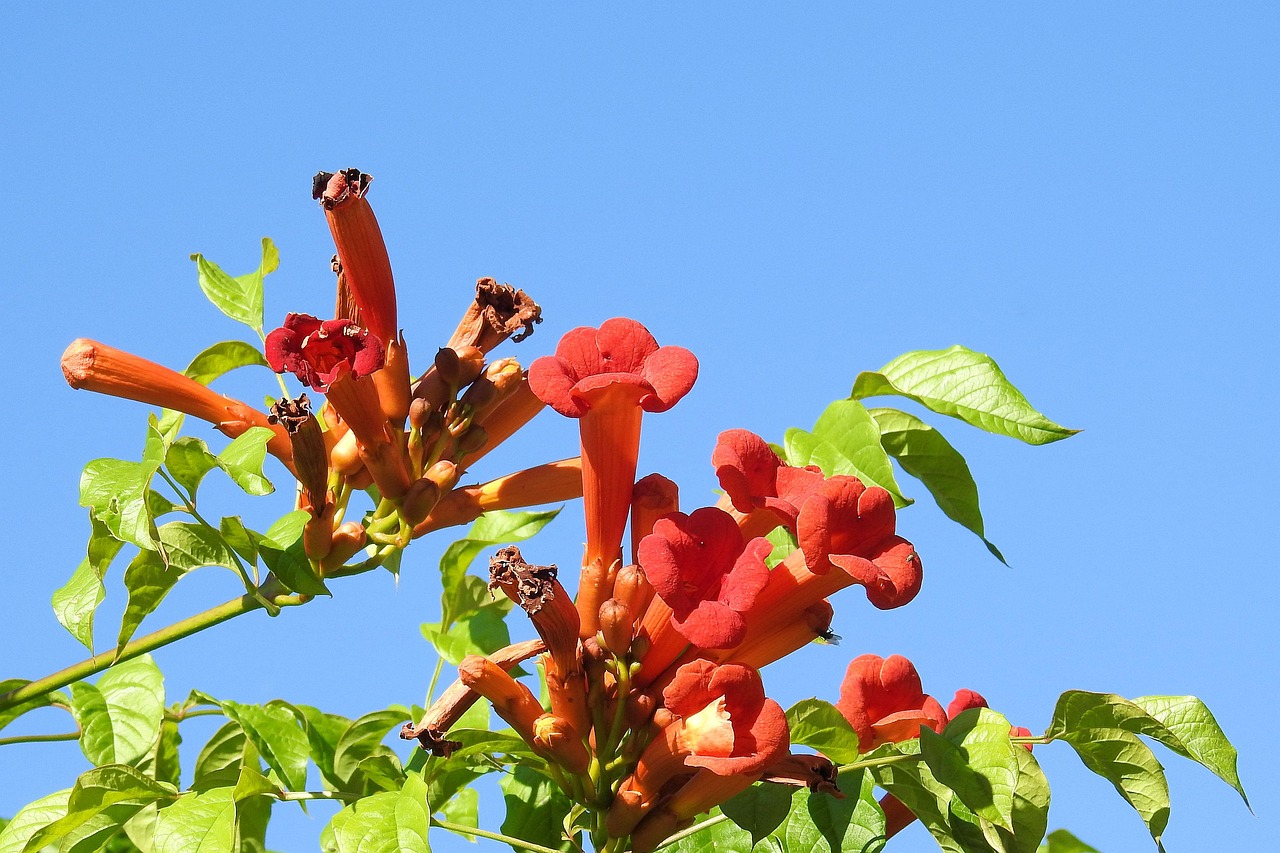
With its large, pendulous trumpet-shaped flowers, this plant is visually striking — but contains potent tropane alkaloids that affect the nervous system.
Why this plant is dangerous
- Every part of the plant contains scopolamine and atropine
- Often grown in warm regions of the U.S. as an ornamental shrub
- Toxins cause rapid disruption of nerve and brain function
- Even small amounts can induce hallucinations and paralysis
Symptoms of poisoning
In extreme cases: respiratory failure and death
- Dry mouth, dilated pupils
- Severe confusion, agitation, hallucinations
- High heart rate and seizures
#10 Castor Bean: The Ricin Factory
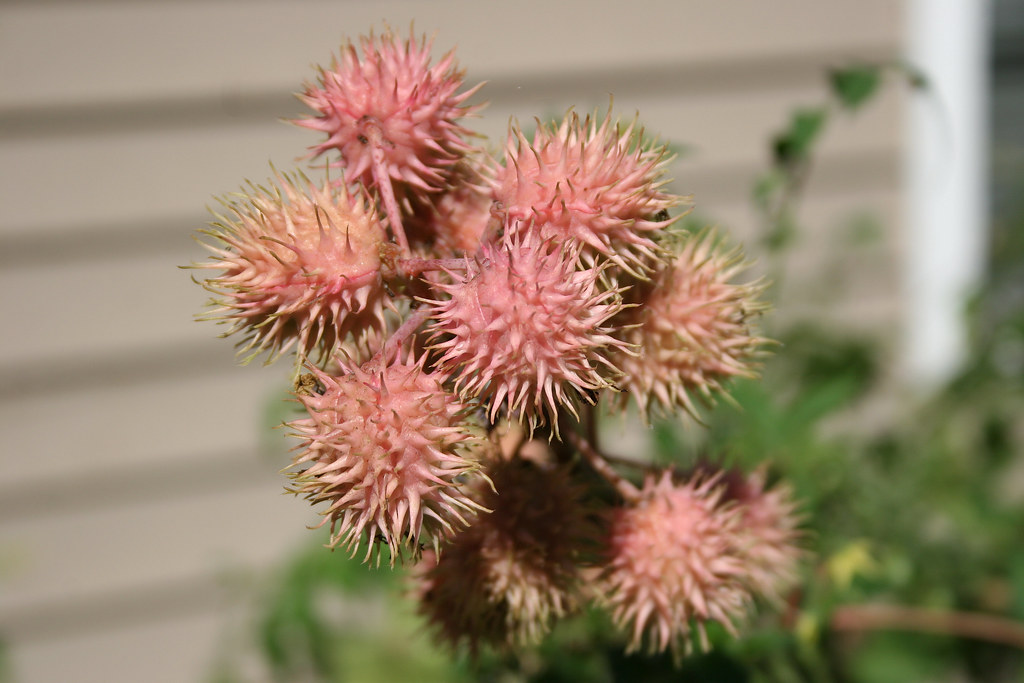
Castor bean plants are cultivated for their dramatic foliage, but the seeds contain ricin, one of the most lethal natural toxins known to humans.
Why this plant is dangerous
- Ricin inhibits protein synthesis and is deadly in minute amounts
- Only 1–3 crushed seeds can kill an adult
- Toxin remains active even when seeds are dried
- Because of its attractive foliage and seeds, it is sometimes unknowingly grown in home gardens
Symptoms of poisoning
- Organ failure and death can occur within 36–72 hours without treatment
- Burning sensation in mouth and throat
- Severe abdominal pain, vomiting, bloody diarrhea
- Dehydration and drop in blood pressure
#9 Poison Hemlock: The Socrates Special

Often mistaken for wild parsley or Queen Anne’s lace, this invasive biennial contains coniin, a highly toxic neurotoxin.
Why this plant is dangerous
- All parts are poisonous, particularly the roots and seeds
- Even small amounts can disrupt the nervous system
- Commonly grows along roadsides, fields, and sometimes at the edges of backyards
- Easily confused with edible wild plants, increasing the risk of accidental ingestion
Symptoms of poisoning
Death is caused by paralysis of the respiratory muscles
- Nausea, sweating, tremors
- Progressive paralysis starting in the legs
- Slowed heart rate and respiratory failure
#8 Sago Palms: The Bonsai Killers
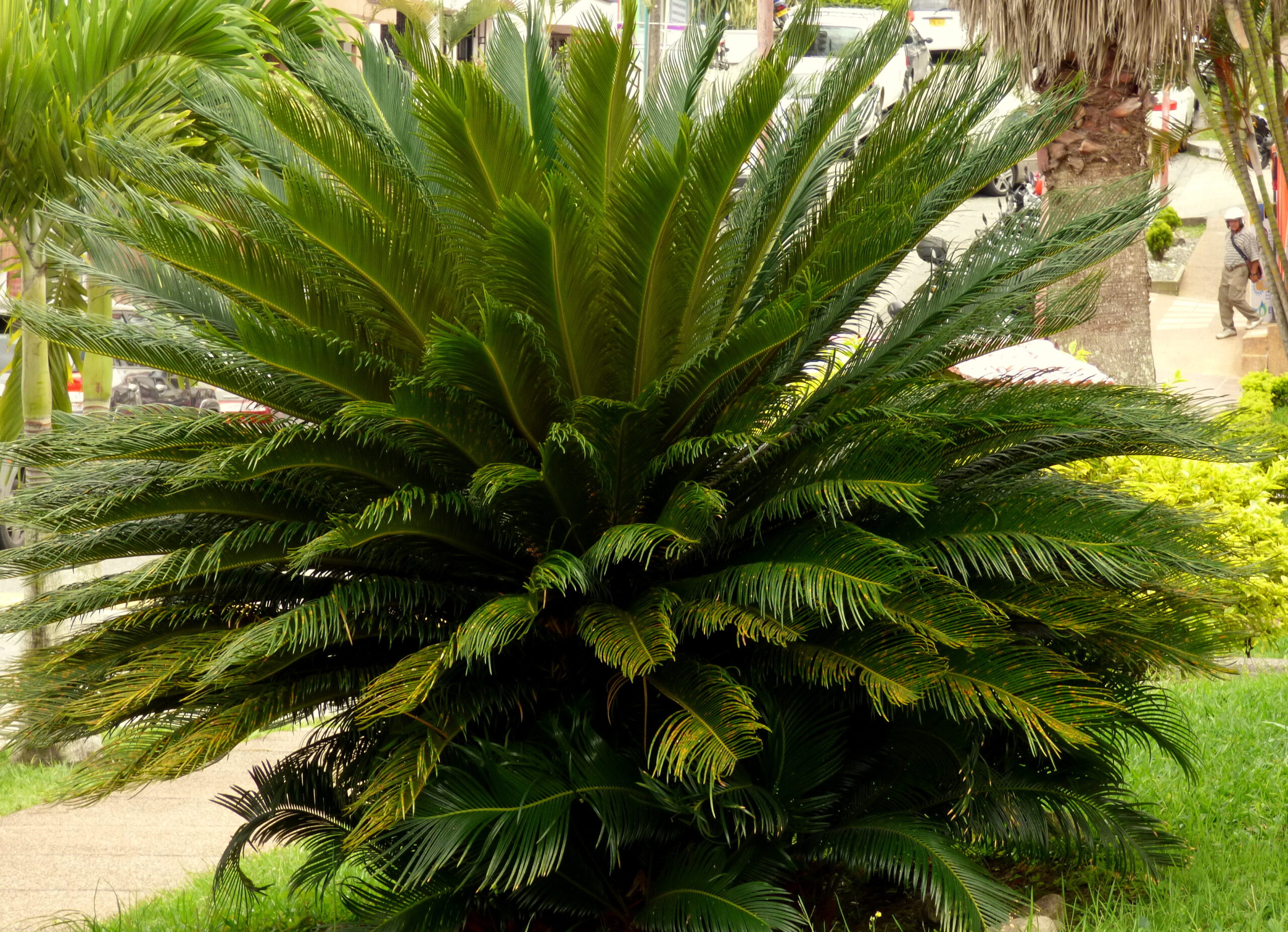
Commonly used as a decorative houseplant or outdoor landscaping plant in warmer regions, the sago palm is deceptively attractive — and highly toxic.
Why this plant is dangerous
- All parts of the plant are poisonous, especially the seeds (nuts)
- The toxin cycasin can cause severe liver failure in dogs, cats, and humans
- Even a single seed can be fatal to a pet
Symptoms of poisoning
Without rapid treatment, death can occur within 2–3 days
Vomiting, drooling, and abdominal pain within a few hours of ingestion
Followed by jaundice, seizures, and loss of coordination as liver failure progresses
#7 Azaleas and Rhododendrons: The Stunning Suffocators
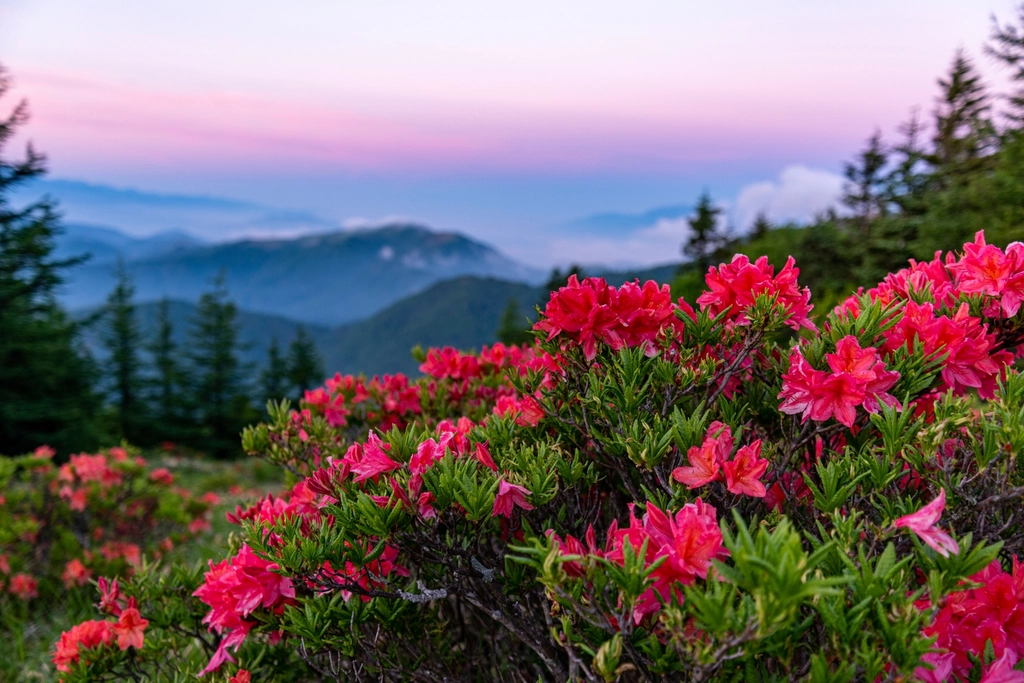
These flowering shrubs brighten many suburban yards, but both azaleas and rhododendrons contain a potent toxin called grayanotoxin.
Why this plant is dangerous
- Leaves, flowers, nectar, and even honey made from the nectar are toxic
- Ingestion of just a few leaves can cause serious poisoning in children and pets
- Toxin interferes with the electrical activity of muscles and nerves, especially in the heart
Symptoms of poisoning
Severe cases may progress to convulsions or cardiac arrest
- Excessive salivation, nausea, and vomiting
- Low blood pressure, dizziness
- Slow or irregular heartbeat
#6 Holly Berries: The Christmas Killers

Holly bushes are a classic ornamental plant and a popular holiday decoration, but the bright red berries are easy for children to mistake for food.
Why this plant is dangerous
- Berries contain saponins, which irritate the stomach and intestines
- As few as 2–5 berries can cause symptoms in children
- The entire plant is mildly toxic, but berries pose the highest risk
Symptoms of poisoning
- Drowsiness or dehydration may occur if large quantities are consumed
- Severe nausea and vomiting
- Diarrhea and abdominal cramping
#5 Wisteria: The Climbing Assassin
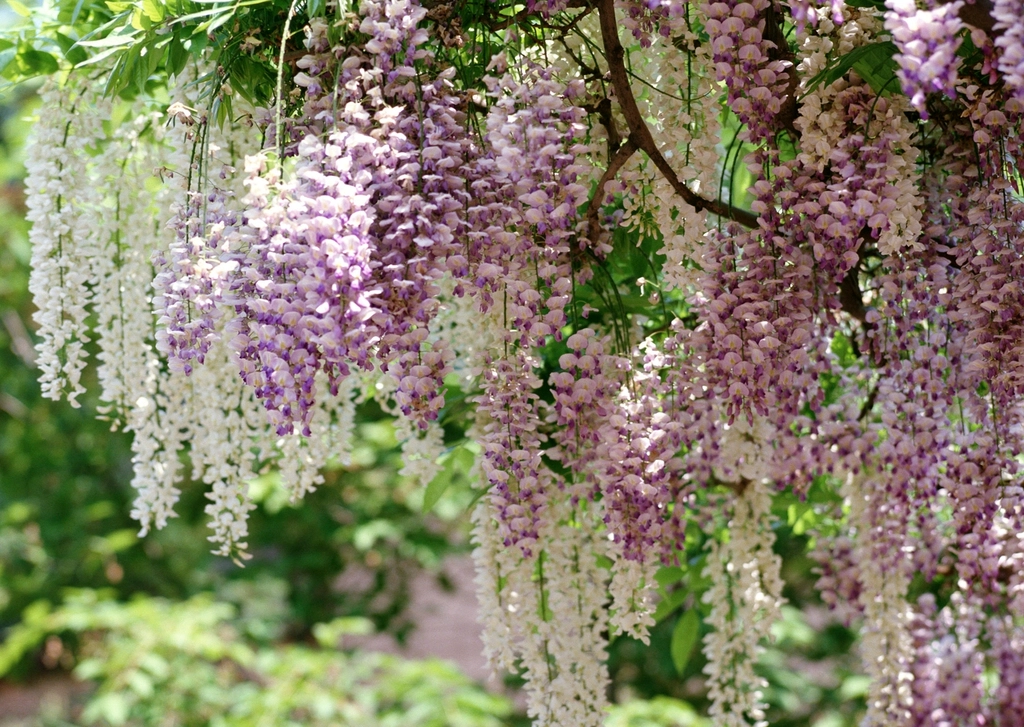
Wisteria vines produce beautiful, fragrant blooms, but the seeds and pods contain lectins and wisterin, which are toxic if ingested.
Why this plant is dangerous
- Seeds and seed pods are the most toxic parts
- Even chewing a few seeds can trigger serious poisoning
- Attractive appearance may encourage accidental consumption, especially in children
Symptoms of poisoning
- In severe cases, can lead to collapse or confusion
- Nausea, vomiting, and stomach cramps
- Diarrhea and dehydration
#4 Daffodils: The Spring Betrayers

A familiar spring favorite, daffodils contain lycorine, a toxic alkaloid concentrated mainly in the bulbs.
Why this plant is dangerous
- Bulbs are highly toxic and often confused with onions
- Even handling the bulbs can cause skin irritation
- Ingestion affects the gastrointestinal tract and central nervous system
Symptoms of poisoning
- In large doses, may cause low blood pressure and tremors
- Severe vomiting and abdominal pain
- Excessive salivation
#3 Lily of the Valley: The Deceptive Darling
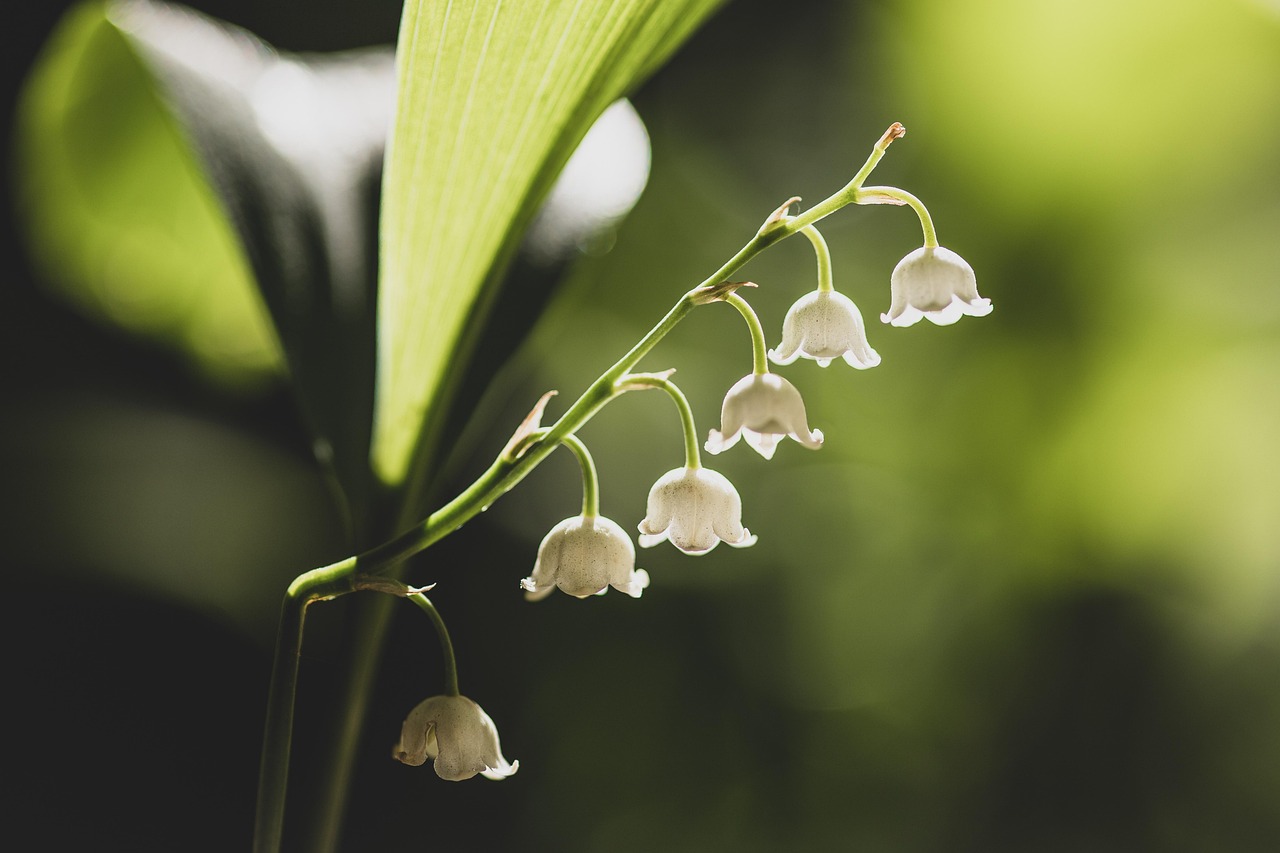
Why this plant is dangerous
- All parts of the plant are toxic, including flowers and berries
- Just a small amount can interfere with heart rhythm
- Toxins remain active even after the plant dries
Symptoms of poisoning
Can lead to cardiac arrest if left untreated. Every part of this plant contains cardiac glycosides that can cause irregular heartbeat and cardiac arrest including:
- Nausea, vomiting, and diarrhea
- Irregular heartbeat and dizziness
#2 Black Cherry Trees: The Familiar Foe

Ornamental and wild cherry trees add beauty to many landscapes — but the leaves, bark, and pits contain cyanogenic glycosides, which release cyanide when metabolized.
Why this plant is dangerous
- Wilted or damaged leaves become even more toxic
- Chewing or crushing the pits can release cyanide
- Children and pets often try to chew on fallen branches or pits
Symptoms of poisoning
- Rapid drop in blood pressure, followed by respiratory failure in severe cases
- Sudden difficulty breathing
- Dizziness, weakness, and confusion
#1 Monkshood: The Wolf’s Bane
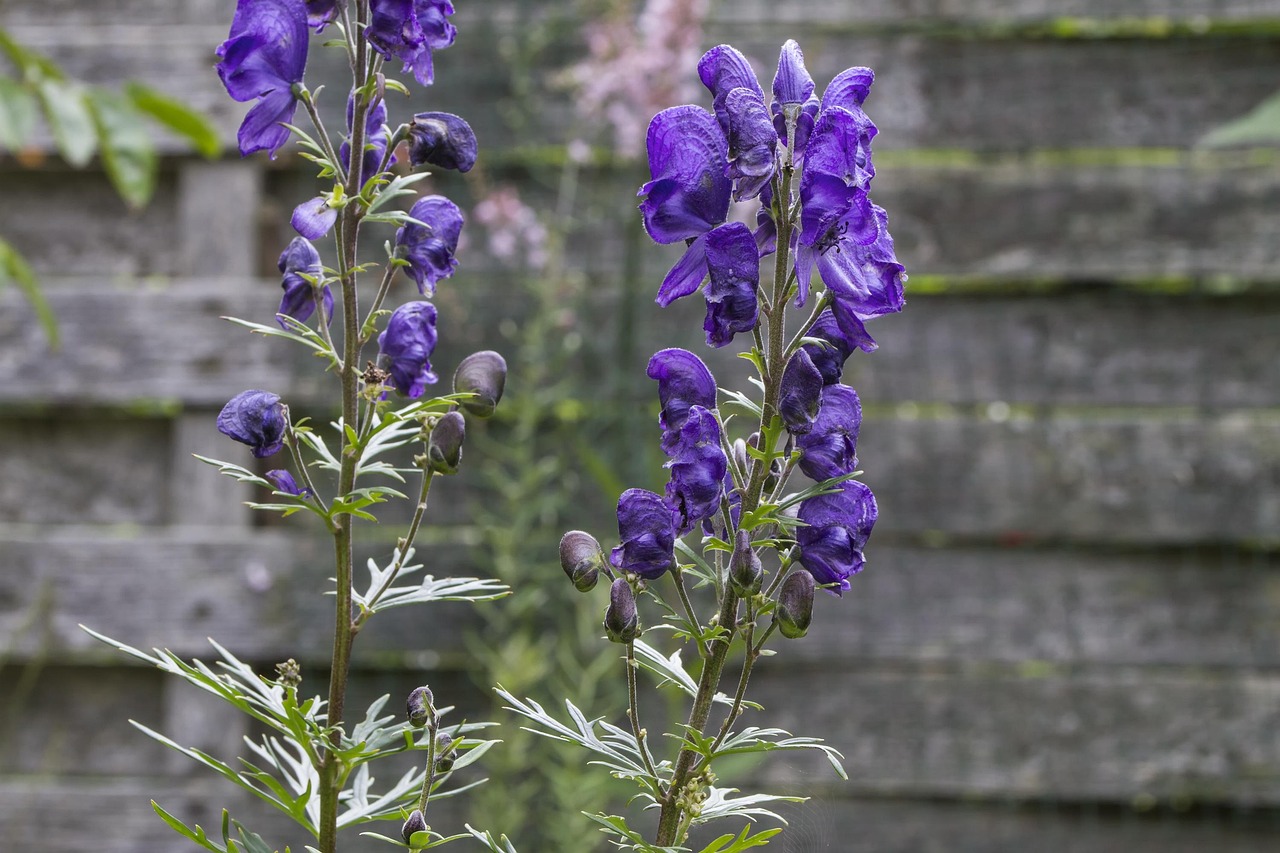
Also known as wolfsbane, this striking purple flowering plant contains aconitine, one of the most potent neurotoxins found in nature.
Why this plant is dangerous
- Roots, leaves, and flowers are highly toxic
- Absorption through the skin is possible just by handling the plant
- Historically used as a poison for hunting and warfare due to its fast-acting effects
Symptoms of poisoning
- Irregular heartbeat and paralysis, leading to respiratory or cardiac failure
- Tingling or numbness of the mouth, face, or skin (often the first sign)
- Rapid onset of nausea, vomiting, and difficulty breathing
Conclusion: Your Garden’s Hidden Dangers

The shocking truth is that your seemingly peaceful garden might be harboring more dangers than a battlefield. From the death cap mushrooms quietly growing under your oak trees to the innocent-looking yew hedge by your front door, toxic plants are everywhere. These aren’t rare, exotic specimens – they’re common landscape plants that millions of people live with every day without realizing the risks.
The most unsettling part isn’t just that these plants exist in our gardens, but how little we know about them. Some part of the ornamental plants or flowers in your yard may contain deadly poison. Many poisonous plants are so common and seemingly innocuous you do not suspect their toxic qualities. We plant them, water them, prune them, and admire them, never suspecting they could harm the very families we’re trying to create beautiful spaces for.
If you’re looking to replace toxic species with something beautiful and safe, there are many garden-friendly alternatives that thrive in American climates and support local wildlife. These non-toxic plants not only add vibrant color and texture to your landscape, but also attract pollinators and improve biodiversity — without posing risks to children or pets. Consider incorporating the following tried-and-true favorites:
Switchgrass (Panicum virgatum) – A beautiful native ornamental grass that provides habitat and movement in the garden without toxicity concerns.
Bee Balm (Monarda) – A native perennial that attracts hummingbirds and butterflies while being completely non-toxic.
Purple Coneflower (Echinacea purpurea) – Hardy and drought-tolerant, with long-lasting blooms and excellent pollinator appeal.
Black-Eyed Susan (Rudbeckia hirta) – Easy to grow, brilliantly colored, and safe for both humans and pets.
Coral Honeysuckle (Lonicera sempervirens) – A non-invasive vine with trumpet-shaped flowers perfect for trellises and arbors.
Lavender (Lavandula angustifolia) – Fragrant, deer-resistant, and safe for most pets while offering year-round structure and color.
Did you recognize any of these deadly beauties growing in your own yard?
- These 6 Zodiac Signs Share the Strongest Connection with Animals - August 23, 2025
- 10 Facts about China’s Endangered “Smiling Angel” Desperately Fighting for Survival - August 22, 2025
- 11 Bizarre Things Hummingbirds Secretly Love (But Most Gardeners Ignore) - August 20, 2025

